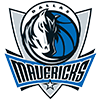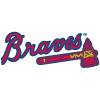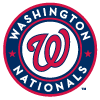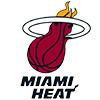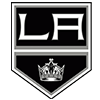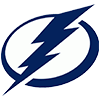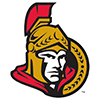Last week we examined some shaky AL bullpens, but they don't have a monopoly by any means. The are plenty of bullpens in the National League with evolving roles including decisions on who will get the call in the ninth inning.
With so many undecided bullpen scenarios, I found myself leaning to a specific plan of attack on draft day. Basically, I targeted an actual closer to anchor my bullpen, then tried to fill in behind him with pitchers I felt could eventually work themselves into relatively consistent save chances. Challenging? Absolutely. However, there is great satisfaction in outmaneuvering your opponents. This approach tests your scouting and assessment skills, as many times the mainstream will select a pitcher – often the primary set-up guy – and label that pitcher the next in line for saves. Interestingly, that guy is only the benefactor in maybe half of the scenarios. Sometimes there is a better option. Our goal here is to identify him, hopefully before the word gets out.
The bottom line, again: The better teams (usually) with more quality pitching depth, barring injuries, are usually both more predictable and more productive with regard to providing useful fantasy statistics. Ideally, you could fill your staff with pitchers from better teams with the depth to maintain generally static roles for their bullpen arms. Unfortunately, those guys tend to be expensive on draft day and almost never appear on the waiver wire. That said, we need to look at some teams in what seems
Last week we examined some shaky AL bullpens, but they don't have a monopoly by any means. The are plenty of bullpens in the National League with evolving roles including decisions on who will get the call in the ninth inning.
With so many undecided bullpen scenarios, I found myself leaning to a specific plan of attack on draft day. Basically, I targeted an actual closer to anchor my bullpen, then tried to fill in behind him with pitchers I felt could eventually work themselves into relatively consistent save chances. Challenging? Absolutely. However, there is great satisfaction in outmaneuvering your opponents. This approach tests your scouting and assessment skills, as many times the mainstream will select a pitcher – often the primary set-up guy – and label that pitcher the next in line for saves. Interestingly, that guy is only the benefactor in maybe half of the scenarios. Sometimes there is a better option. Our goal here is to identify him, hopefully before the word gets out.
The bottom line, again: The better teams (usually) with more quality pitching depth, barring injuries, are usually both more predictable and more productive with regard to providing useful fantasy statistics. Ideally, you could fill your staff with pitchers from better teams with the depth to maintain generally static roles for their bullpen arms. Unfortunately, those guys tend to be expensive on draft day and almost never appear on the waiver wire. That said, we need to look at some teams in what seems like turmoil, to hopefully find some bullpen value.
Let's review NL bullpens with question marks as we jump into the 2022 season:
Cardinals 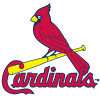 – I like this one. I think we'll see a genuine opportunity arise. Last year the Cardinals pen changed more than once. I was convinced Jordan Hicks was going to be the guy once he got healthy. He had closer stuff and looked the part. Unfortunately, the healthy part didn't happen in 2021. As things sorted out, Giovanny Gallegos emerged as their most reliable ninth-inning option, and most assumed he would continue in that role this year. This spring the team announced Hicks would be stretched out as a possible starter. Hmmm. They also mentioned the desire to have Gallegos fill a more versatile role. Maybe that means Alex Reyes, Genesis Cabrera or Nick Wittgren climb into the picture? Well, Reyes is hurt, and Cabrera and Wittgren are better suited to set-up roles. Then, a few days ago, they announced Hicks was moving back to the pen. Ahhh. There we go. But, wait. As only the Cardinals can murk things up, on Wednesday they named Hicks the fifth starter. Be patient. I still think he ends up closing. Eventually.
– I like this one. I think we'll see a genuine opportunity arise. Last year the Cardinals pen changed more than once. I was convinced Jordan Hicks was going to be the guy once he got healthy. He had closer stuff and looked the part. Unfortunately, the healthy part didn't happen in 2021. As things sorted out, Giovanny Gallegos emerged as their most reliable ninth-inning option, and most assumed he would continue in that role this year. This spring the team announced Hicks would be stretched out as a possible starter. Hmmm. They also mentioned the desire to have Gallegos fill a more versatile role. Maybe that means Alex Reyes, Genesis Cabrera or Nick Wittgren climb into the picture? Well, Reyes is hurt, and Cabrera and Wittgren are better suited to set-up roles. Then, a few days ago, they announced Hicks was moving back to the pen. Ahhh. There we go. But, wait. As only the Cardinals can murk things up, on Wednesday they named Hicks the fifth starter. Be patient. I still think he ends up closing. Eventually.
Nationals 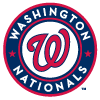 – Most people agree Tanner Rainey has the best closer tools in the Nationals bullpen. He has an electric arm, when it's firmly attached, but injuries have tarnished his recent results and control remains an issue. The Nats have Kyle Finnegan and Steve Cishek, but they really are set-up me, and they want Rainey to claim the gig and run with it. They did sign an interesting insurance policy in veteran southpaw Sean Doolittle, and I think he will likely grab occasional saves if Rainey struggles or gets hurt. Doolittle had some injury problems of his own, but he looks reasonably healthy and he has saved 20 or more games in a season four times in his career. I like Rainey to lock things down as the primary closer at some point, and Doolittle makes a good handcuff if your roster allows for that kind of luxury.
– Most people agree Tanner Rainey has the best closer tools in the Nationals bullpen. He has an electric arm, when it's firmly attached, but injuries have tarnished his recent results and control remains an issue. The Nats have Kyle Finnegan and Steve Cishek, but they really are set-up me, and they want Rainey to claim the gig and run with it. They did sign an interesting insurance policy in veteran southpaw Sean Doolittle, and I think he will likely grab occasional saves if Rainey struggles or gets hurt. Doolittle had some injury problems of his own, but he looks reasonably healthy and he has saved 20 or more games in a season four times in his career. I like Rainey to lock things down as the primary closer at some point, and Doolittle makes a good handcuff if your roster allows for that kind of luxury.
Padres  – The Padres look competitive in the tough NL West, but there are some questions to be answered in their bullpen. They do not currently have a proven closer, so they may be conducting tryouts early on, but I think a decision on the role of the best arm (when healthy) could end the speculation. The consensus focuses on key set-up man, Emilio Pagan and newcomer Robert Suarez, who has been overseas in Japan the past five years. Closing is not new to Suarez, who saved 67 games over the last two seasons for the Hanshin Tigers. He has the arm – he can touch triple digits – and has displayed respectable command, but this is a step up in competition. The question mark is Dinelson Lamet. Lamet has one of the best sliders in the game and is capable of blowing batters away, but he hasn't been able to stay healthy. He will begin the season in the bullpen, and if the team decides that is the best spot for him going forward, he has instant closer stuff. Roster Suarez, but I really want Lamet, too, just in case they go that way.
– The Padres look competitive in the tough NL West, but there are some questions to be answered in their bullpen. They do not currently have a proven closer, so they may be conducting tryouts early on, but I think a decision on the role of the best arm (when healthy) could end the speculation. The consensus focuses on key set-up man, Emilio Pagan and newcomer Robert Suarez, who has been overseas in Japan the past five years. Closing is not new to Suarez, who saved 67 games over the last two seasons for the Hanshin Tigers. He has the arm – he can touch triple digits – and has displayed respectable command, but this is a step up in competition. The question mark is Dinelson Lamet. Lamet has one of the best sliders in the game and is capable of blowing batters away, but he hasn't been able to stay healthy. He will begin the season in the bullpen, and if the team decides that is the best spot for him going forward, he has instant closer stuff. Roster Suarez, but I really want Lamet, too, just in case they go that way.
Marlins [LOGO– This one appeared to be sorting itself out late last year, as their best option, Dylan Floro, took the gig and settled in. Unfortunately, Floro has been bothered with arm soreness this spring and is not going to be ready right out of the gate. That left the door open for Anthony Bender, at least temporarily, and other set-up guys like Anthony Bass and lefty Richard Bleier might also get into the mix. But, the Marlins muddied the waters a bit more when they acquired Cole Sulser from Baltimore last week. He lead the Orioles in saves in 2021 (with eight, so don't get too giddy), and he becomes the top option at least until Floro returns. Sulser is a mediocre alternative, but Floro won't be confused with Mariano Rivera, so there could be a competition. Assuming Floro comes back as soon as expected, I give him the edge.
Giants  – On paper, some teams don't really look like competitors in their division, but they consistently outperform expectations. That pretty much sums up the Giants, who won 107 games last year. Results like that come from players stepping up. It's an atmosphere; a state-of-mind. Can they do it again? I don't think so, but I hesitate to bet against it, and who finishes games certainly plays into it. They say this will be a committee, and history tells us it could actually be just that. There are three pitchers on the closer depth chart, but submariner Tyler Rogers is really a set-up guy, so we'll focus on veteran southpaw Jake McGee and young flamethrower Camilo Doval. Both are legitimate options, albeit for different reasons. McGee has experience, and Doval has dominant stuff, even if he can display inconsistent command at times. Being a lefty and a righty plays into the committee approach, and I expect them to split the save chances, at least early on. Doval is the future, so he could gradually take over if he pitches effectively, but I don't think they want to put too much pressure on him just yet.
– On paper, some teams don't really look like competitors in their division, but they consistently outperform expectations. That pretty much sums up the Giants, who won 107 games last year. Results like that come from players stepping up. It's an atmosphere; a state-of-mind. Can they do it again? I don't think so, but I hesitate to bet against it, and who finishes games certainly plays into it. They say this will be a committee, and history tells us it could actually be just that. There are three pitchers on the closer depth chart, but submariner Tyler Rogers is really a set-up guy, so we'll focus on veteran southpaw Jake McGee and young flamethrower Camilo Doval. Both are legitimate options, albeit for different reasons. McGee has experience, and Doval has dominant stuff, even if he can display inconsistent command at times. Being a lefty and a righty plays into the committee approach, and I expect them to split the save chances, at least early on. Doval is the future, so he could gradually take over if he pitches effectively, but I don't think they want to put too much pressure on him just yet.
Diamondbacks  – Spring just wouldn't be spring without discussions predicting the absolute end of closing duties for Mark Melancon. Last year it was San Diego, where several relievers were expected to deny Melancon save chances. The 37-year-old led the majors in saves with 39. Now he moves to Arizona, and a lot of people again expect him to fail miserably. I understand. He doesn't have dominant, prototypical closer stuff. It should be noted he never has had eye-popping velocity, yet he's approaching 250 career saves. All he does is just go out and get the job done. I owned Melancon in most leagues last year. It's the same this year. It has gotten to the point I look for an analyst willing to say something positive about him. I don't think I've found one yet. Maybe people forget that while some pitchers crumble under closer pressure, others thrive on it. I admit, I also own Ian Kennedy in most of those leagues as an insurance policy, but until Melancon shows us the magic is gone, he should get the save ops.
– Spring just wouldn't be spring without discussions predicting the absolute end of closing duties for Mark Melancon. Last year it was San Diego, where several relievers were expected to deny Melancon save chances. The 37-year-old led the majors in saves with 39. Now he moves to Arizona, and a lot of people again expect him to fail miserably. I understand. He doesn't have dominant, prototypical closer stuff. It should be noted he never has had eye-popping velocity, yet he's approaching 250 career saves. All he does is just go out and get the job done. I owned Melancon in most leagues last year. It's the same this year. It has gotten to the point I look for an analyst willing to say something positive about him. I don't think I've found one yet. Maybe people forget that while some pitchers crumble under closer pressure, others thrive on it. I admit, I also own Ian Kennedy in most of those leagues as an insurance policy, but until Melancon shows us the magic is gone, he should get the save ops.
Reds 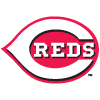 – This case is not a question of who should close, but rather who will be healthy enough to close. Lucas Sims is significantly better-suited to fill the role than anyone else in the Reds stripped down bullpen, but he's not going to be healthy enough to man that job on Opening Day. Early last season he opened some eyes with his electric stuff, but an elbow strain cost him a couple months, and he wasn't the same after. This spring, the elbow woes have resurfaced. He's expected back in late April, but what we'll get is a guess. In the meantime, look for Art Warren or maybe Hunter Strickland to work the ninth if the Reds can get there with a lead. I'd wait (and hope) for Sims' return.
– This case is not a question of who should close, but rather who will be healthy enough to close. Lucas Sims is significantly better-suited to fill the role than anyone else in the Reds stripped down bullpen, but he's not going to be healthy enough to man that job on Opening Day. Early last season he opened some eyes with his electric stuff, but an elbow strain cost him a couple months, and he wasn't the same after. This spring, the elbow woes have resurfaced. He's expected back in late April, but what we'll get is a guess. In the meantime, look for Art Warren or maybe Hunter Strickland to work the ninth if the Reds can get there with a lead. I'd wait (and hope) for Sims' return.
Cubs  – Sometimes a team takes the field with no one who looks like a standout to close games. The Cubs are in that category. There are several arms reportedly being considered, led by veteran David Robertson. He was once a fairly successful end-gamer, but that was five or six years ago, and injuries and advancing age have cut into his upside. I'll pass. Mychal Givens has some closing experience, but he's much better-suited to a role as a situational righty. Chris Martin is a thought, too, but he's not really closer material. The guy to watch is Rowan Wick. He has closer stuff, but injuries have slowed his progress, and he does struggle to throw strikes. The Cubs have nothing to lose. Maybe they'll give him the chance to prove himself.
– Sometimes a team takes the field with no one who looks like a standout to close games. The Cubs are in that category. There are several arms reportedly being considered, led by veteran David Robertson. He was once a fairly successful end-gamer, but that was five or six years ago, and injuries and advancing age have cut into his upside. I'll pass. Mychal Givens has some closing experience, but he's much better-suited to a role as a situational righty. Chris Martin is a thought, too, but he's not really closer material. The guy to watch is Rowan Wick. He has closer stuff, but injuries have slowed his progress, and he does struggle to throw strikes. The Cubs have nothing to lose. Maybe they'll give him the chance to prove himself.
Next week we'll have a look at my "home" league pitching staff. The annual auction was interesting, with some good news and a few disappointments.








